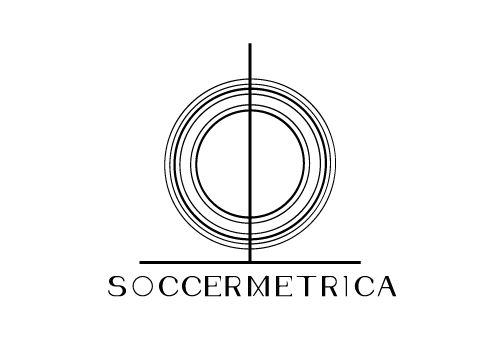The popularity of the 4-2-3-1 formation over the last few seasons has led to the reemergence of the classic #10 or trequartista role. In the mid to late 2000s the European game had become dominated by the 4-3-3 with teams employing an extremely defensive holding midfielder (Claude Makelele the obvious example) flanked on either side by two energetic and generally very athletic shuttling, box-to-box midfielders. Teams would look to overpower one another in the middle of midfield by playing three strong, physically imposing players. For example, the Chelsea side that won back-to-back titles in 2004-2005 and 2005-2006 played with a midfield triangle of Makelele at the base with Frank Lampard and Tiago or Michael Essien just in front.
The 4-3-3 doesn't allow for the classic central attacking playmaker that sits just in behind the striker. The 4-2-3-1 has allowed teams to maintain defensive balance with two holding midfielders shielding the back four while allowing one attacking player to stay further up the pitch, move into tight pockets of space and use their creativity to provide the final ball to create scoring chances.
Sunday afternoon saw two excellent central attacking midfield performances within the 4-2-3-1 framework from Arsenal's Mesut Ozil and Manchester City's David Silva. Both players got into dangerous positions between the opposition midfield and defensive lines and created loads of chances for the other attacking players.
Inside the first 30 seconds of Manchester City's comfortable 3-0 win over Chelsea, Silva collected the ball in midfield, spun Cesc Fabregas and provided a perfectly weighted through ball that put Sergio Aguero clean through on goal. The Argentinian was denied an opener by Asmir Begavic in the Chelsea goal but the immediate danger posed by Silva and Aguero was a sign of things to come.
Ozil's impact in Arsenal's 2-1 at Crystal Palace was also felt early on. In the 7th minute Arsenal sprung a counter attack from a Palace free kick. Ozil put Alexiz Sanchez through on goal with an excellent pass but Sanchez's first touch was poor.
Ultimately both Silva and Ozil would get the assists their performances deserved and made nuisances of themselves throughout. Silva was involved in the build up for City's first and assisted the second and third. Ozil assisted Olivier Giroud for Arsenal's opener and nearly added a second assist with a clever ball to Aaron Ramsey at the front post in the 37th minute.
Silva created 3 chances of which City converted two, Ozil created an impressive 5 chances.
The most impressive aspect of Ozil's performance was his efficiency with the ball. He completed 54 of 55 total passes and a remarkable 37 of 38 passes in the final third of the pitch. The only player to complete more final third passes in the opening two weeks is, unsurprisingly, Silva who completed 45 in City's easy 3-0 win over West Brom (Ozil also managed 37 attacking third passes in the defeat to West Ham).
Ozil has been accused of disappearing from games in his first two seasons at Arsenal. On occasions that criticism has been fair but often he's unfairly criticized by pundits confusing what can appear to be a languid playing style with a lack of effort. He's certainly not Alexis Sanchez whose style of play, all direct sprints forward with the ball and attempts at defense-splitting penetrating passes, tends to give the impression he's working harder. But a side needs balance- two Alexis style players likely wouldn't be an ideal set up for Arsenal. Sanchez is a brilliant player, certainly Arsenal's best last season, but in attempting mazey dribbles and defense-splitting passes he at times gives possession away too easily. It's important to have those Alexis type players willing to take risks in the final third to create chances but it's also important to have a player like Ozil who will circulate possession and be extremely efficient with the ball. Last seaosn Ozil had an overall pass success rate of 88.3%, an incredible percentage for an attacking midfielder, compared to just 76.8% for Sanchez. For comparison Chelsea's Edenz hazard, who plays the same position as Sanchez, had a pass success rate of 86.8%.
(Two Ozil type players in the same attacking midfield three likely wouldn't provide enough directness and goal scoring ability; again it's all about getting the balance right).
Silva seems to have benefited from the arrival of Raheem Sterling from Liverpool. Last season Manuel Pellegrini tended to opt for a 4-4-2 formation which meant Silva was deployed on the wing. He was still effective in coming inside from a wide starting position and creating chances but it also meant he had to do some defensive work tracking the opposition fullback meaning he was pulled further from the opposition goal and forced to use up energy in tracking back defensively. The arrival of Sterling has seen City switch to a 4-2-3-1 with Sterling on the left channel and Silva in the #10 role. He no longer has to track the opposition right back and can maintain a position further up the pitch where he can provide an immediate outlet ball when City recover possession.
The 4-2-3-1 has been great in allowing a framework for such technically gifted, creative players to take center stage, literally, and dictate attacking play. They allow their respective team's to play highly entertaining, attacking football. We saw two expert performances in this role from Silva and Ozil Sunday. Manchester City are better endowed at striker to take advantage of their excellent trequartista but Olivier Giroud's improved performance this weekend and a strong end to last season for Theo Walcott could be enough to convert more of the chances created by Ozil into goals.


